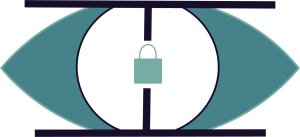Description: A blog on Calls to Action and how they benefit your website.

Calls to Action: Your Guide to Driving Action
Calls to Action (CTAs) are buttons placed strategically around a website and webpage to entice you to engage with their business. CTAs are harmless psychological suggestions that work to use your unconscious mind to make the likelihood of you engaging, purchasing, or spreading awareness of the website’s noble cause. More likely than not, on every website you have clicked on, you have either used or seen a CTA. They are placed obviously on a page, with bold colors, large text, and different styles used to make them eye-catching, and while I believe it would be a safe statement to say that almost all CTAs end up being a button, CTAs can also be links or forms, so long as their purposes remain the same.

Crafting Effective CTAs
While I’m sure to many people Calls to Action seem like their simply placed in the same area as the content topic, but genuinely good CTAs have many more elements to them that are taken into consideration than most realize.
Text
While this might be an obvious element of the effectiveness of CTAs, I think it’s good to cover all bases, this one being how certain language is used to fill CTA work to assist in reeling in the user. Trigger words like “get,” “reserve,” and “try” used in CTAs are more likely to get some action from the user than simple words like “submit” and “enter.” When you’re creating Calls to Action for your website, make sure to be conscious of your text choice.

Color & Size
Another obvious factor; color and size! Calls to Action with bold, vibrant colors stand out so much more on dark websites, allowing the user’s eyes to be drawn to click the button before even going in to read what the content is about. Even notice how on all your medical websites, their button is a shade of color rather than white or black, which helps the most important links stand out above all the rest, making them more likely to be clicked on by you. The size of your buttons also plays a part in attracting your attention, with most CTAs being larger than the regular Joe Shmoe link.

Iconography
Not all CTAs have text to help encourage you to click on them, in fact, some of the most common CTAs today have no text at all, instead, they use icons. Shopping carts, login accounts, and downloads are all examples of potential CTAs that require no text; their visual designs are enough to let you know what they are and entice you to click on them.

Usefulness of CTAs
Calls to Action are extremely useful to all websites. They create engagement and bring special attention to the most important parts of your business that you want the users to engage with. Not only can they bring clients and money right to you, but they help increase conversion rates, i.e. the amount of people who interact with the website. Plus, CTAs not only help to engage the user but also help to improve user experience. They are big, blaring signs that help the user navigate the webpage and access the important features that you want them to use. Because of this, CTAs are also a great way to improve your digital marketing, and by using them alongside other digital marketing strategies, you will have no problem getting users to interact with your website.
In Summary
If there is anything for you to take away from this blog, it is this; USE CALLS TO ACTION! I promise you, they can be the difference between a good website and ok conversions, and a great website that has more people wanting to use the business’s services than they can handle. They help to keep users happy while navigating websites and improve their experience while also directing them to interact with the website in a way that gets them to want to use the websites services. So, by using them correctly, businesses can have a better turnout of conversions than they would even have without them.
